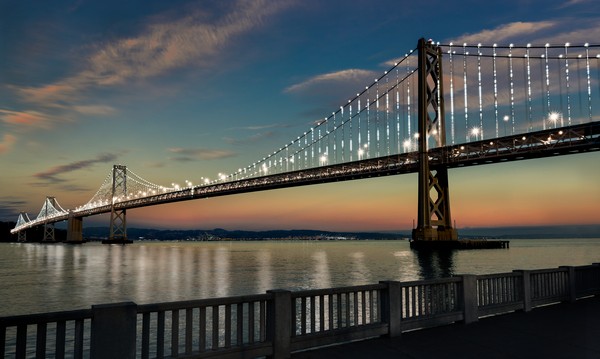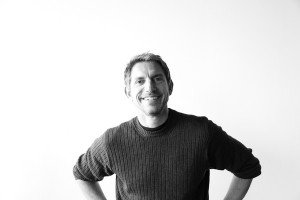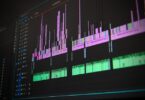aNewDomain.net — The campaign is on to keep the largest contemporary art LED lights sculpture in the world lit.
In 1976, a little girl from Petaluma in California’s dairy country saw artists Christo and Jeanne-Claude’s extraordinary 24.5-mile Running Fence art installation, an 18-foot high fabric fence that traversed some 59 ranchers’ property and crossed 14 roads out to the Pacific Ocean. The project took four years to plan, required a 450-page Environmental Impact Report, and 400 people to build. 17 days later, as planned, the fence was gone without a trace. Little did Amy Critchett know as she looked at the ephemeral curtain that nearly four decades later she would be heading up the efforts to make another extraordinary public art project permanent: The Bay Lights, a 1.8-mile light sculpture installation on the San Francisco Bay Bridge.
The Bay Lights Project debuted on March 5, 2013. It brings to the San Francisco Bay a glittering tiara worn from dusk till dawn by the San Francisco Bay Bridge, which had long been considered a dull gray understudy to the more-glamorous Golden Gate Bridge. The Bay Bridge opened in late 1936, but just a few months later, the Golden Gate Bridge eclipsed it with its symmetry, Art Deco design and suspension span engineering, and the Bay Bridge faded into the sidelines.
Ben Davis, founder of San Francisco communications agency Words Pictures Ideas was tasked with branding the Bay Bridge East Span public works project. Davis had attended Burning Man and witnessed the abundant creativity and spirit of collaborative building of art projects. But as they were torn down, he also witnessed the temporary nature of the artworks and the image of the subsequent road rage as people left the event. This all stuck with him and bothered him. So as he mulled over how to create an event to celebrate the 75th birthday of the San Francisco Bay Bridge, he envisioned a display of contemporary public art that would endure and inspire.
He thought,Why not turn the Bridge into a work of art? Davis reached out to his contacts at the state transportation agency, Caltrans, and they were intrigued. Then he contacted New York City artist, Leo Villareal, having seen his lights sculptures using computer programming and LED lights in Silicon Valley. Villareal was fascinated with DIY technology when he too had been at Burning Man, where he created his first light sculpture in 1997. Since then he has become an internationally-acclaimed light sculptor with works in such places as the National Gallery of Art, Cornell University and Madison Square Garden.
Partnering with engineering and design firm, Parsons Brinkerhoff, Davis and Villareal developed the technical plans to integrate 25,000 individually-addressable LED nodes through a network of fiber to create what became The Bay Lights Project. The LED nodes were from Philips Color Kinetics. Villareal designed proprietary software algorithms to create glittering, in patterns that never quite repeat themselves. It took six months for the team of electricians, working full weeks, to install the light network that would be eight times the scale of the Eiffel Tower’s 100th anniversary lighting.
An eight-million-dollar project like this doesn’t happen by itself. That little girl who was inspired by Running Fence was now grown up. She was one of the first employees of WIRED magazine and Oxygen Media and former director of ZERO1, an arts and technology incubator. The daughter of, and campaign manager for, Congresswoman Lynn Woolsey, Amy knows what it is like to pull together teams and relationships. As executive director of Illuminate the Arts, she built a team and set about to establish the project’s non-profit status and contract with agencies. She also had to arrange for permits, handle communications and fundraising, manage all things technical for the installation, and then set about to create the social media and grassroots efforts to make the project a reality.
“When I saw The Bay Lights on the cover of the Yellow Pages, I knew we had done it, “ said Critchett, citing that some 50 million people will see it by its two-year anniversary. Some predictions say $100m in revenue will flow through San Francisco because of The Bay Lights project.
Today, The Bay Lights is 100 percent privately funded, and the lights will be on for another year. On March 5, 2014 Amy and her team are kicking off a campaign seeking the $12m needed to see the project through 2025.
And Christo (he retroactively renamed his works for himself and his artist wife Jeanne-Claude who passed away in 2009), in case you were wondering, is a fan. “The Bay Lights is a tribute to Christo and the revolutionary work he has done,” said Amy. Christo told Amy that he appreciates her audacity and understands more than anyone what it took to make it happen.
Want to see it for yourself? Check out the live stream, beginning each night after dark (Pacific time) at thebaylights.org.
For aNewDomain.net, I’m Pat Meier-Johnson.
Based in the San Francisco Bay Area, Pat Meier-Johnson is a senior commentator at aNewDomain.net covering the nexus of technology and art. Look for her stories, interviews, videos and photos about the people and events where digital and analog creative arts meet. Contact her at patmeierjohnson@anewdomain.net.















